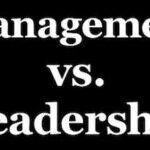The following article was written by Tuck Aikin several decades ago about how managers can avoid the feast and famine cycle by instilling s sense of ownership in their employees. Even though it was penned several decades ago, it is as true today as it was then. I hope you enjoy it.
“How’s business?” I asked my lunch companion recently, pretty much sure of the response I’d get. With an exhausted look, my friend said, “Incredible. In fact, better than I’d like, believe it or not. I’ve been working at a frantic pace, my family barely remembers my name, I’m whipped, and I don’t see an end in sight.” When I asked her why she doesn’t slow down, she looked at me as though I’d just returned from another planet. “If I did that, I’d have no customers at all when the economy cools off.”, “…idiot…” she would have added if she were less diplomatic.
It’s a real dilemma for a business owner. When times are great good help is hard to find, so you put in herculean hours. Then when things inevitably cycle down, you end up putting in the same hours as before, but this time those efforts are directed at scaring up customers. This recirculating treadmill seems inevitable. Yet, there are a few businesses that never appear to get caught up in it. Their businesses seem to function at a high level without interruption. Such firms apparently never have trouble attracting and retaining high-quality employees either, even during extraordinary times, such as now. How do they do it?
In my experience, the answer lies in the quality and dedication of the employees who work for the business. They provide consistency, they take initiative, they voluntarily rise to any challenge, and they care. In short, they clearly have taken on a sense of ownership. They care about customers’ opinions and work hard to make the buying and the “just looking” experience a pleasant and rewarding one. How that comes about, I believe, is management.
All good managers attract quality people, experience low employee turnover, provide consistently excellent customer service, and always seem to have time for family and to volunteer for local non-profit causes. These uncommon managers know something about work and people that ordinary ones don’t.
“Work is passive without you,” says Michael Gerber in his book The E Myth Revisited. “Work is only an idea before a person does it. But the moment a person does it, the impact of the work on the world becomes a reflection of that idea – the idea behind the work – as well as the person doing it. In the process, the work you do becomes you. And you become the force that breathes life into the idea behind the work.”
So how do good managers implement this concept that results in a highly functioning business? He or she makes sure that their fellow workers understand the idea behind the work they’re being asked to do. Such managers constantly present the big picture of the company and explain how each person’s work fits into that picture and how each person can make a difference in achieving the business vision. And we all want to make a difference. Anyone can explain how to do the tasks of the job, but it takes much more than that to affect the “buy-in” always exhibited by outstanding employees.
As a curiosity, I frequently ask first-rate customer service people how they like working for their company, and invariably they say they love it. And always in their explanation is the sense of pride that theirs’s is the best company around in their particular business. They constantly say “We…” do this, “We…” do that, rather than “I.” They clearly have the big picture, they like it, and they particularly appreciate their manager’s inclusion of them in the overall mission and vision of the company. They feel like they are valued, that they have influence in achieving the overall purpose and that their efforts truly do make a difference. They always express their respect for their boss too, which I’m sure is because their boss treats them with respect as well.
So, if you are a manager, every time you are communicating with your fellow workers, always paint the big picture, the “why” behind every behavior you describe as desirable. At meetings, use pictures that illustrate the point you are trying to make. There are hundreds of very clever magazine advertisement pictures that can be used. Keep an eye out for them and collect them even if you don’t know just when or in what context you might use them.
I happen to like clever sayings too, that seem to express an idea clearly in a few words. Some examples:
- “If you don’t know where you’re going, any road will take you there.” (An adage that urges planning)
- “The trouble is, I don’t know who doesn’t know what.” (A reminder to communicate with everyone who needs to be ‘in the know’)
- “Heroes are created by popular demand, sometimes out of the scantiest materials.” Gerald W. Johnson (urging taking the initiative)
So maybe you are skeptical and think this is just a bunch of philosophical hogwash.
“The person who knows ‘how’ will always have a job. The person who knows ‘why’ will always be his boss.”
Diane Ravitch.
Tuck Aikin was a former SCORE colleague of mine for many years until his retirement. Tuck is a prolific writer and wrote small business-themed articles for the Colorado Springs Gazette for many years. As a co-mentor, Tuck was my inspiration for me starting this blog. The preceding post is reproduced with permission from the author.












